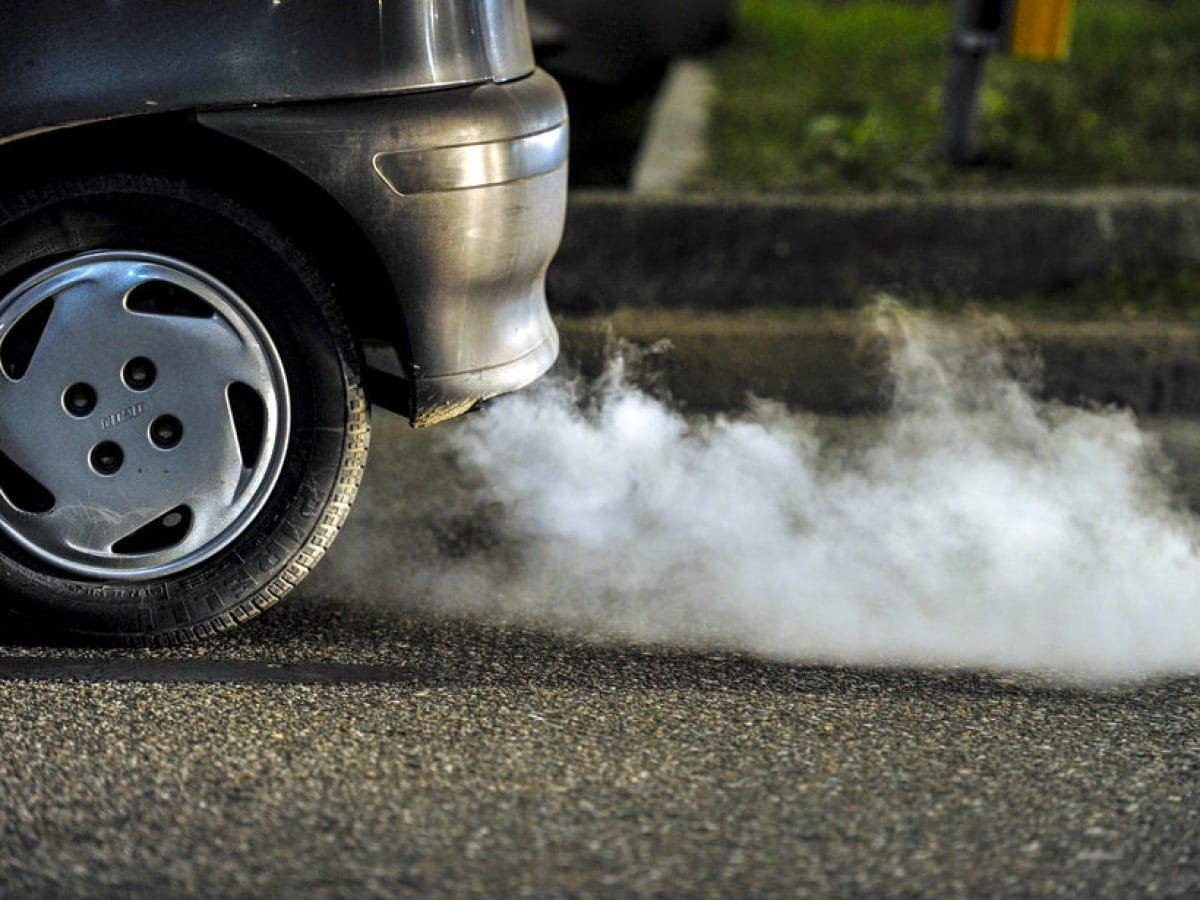You’ve just started your car on a cold morning, and as you glance in the rearview mirror, you notice a puff of white smoke trailing from the exhaust. It lingers for a few seconds and disappears by the time you pull out of your driveway.
It’s a common sight, but it’s also something that catches the attention of many drivers—especially if it becomes a regular occurrence.
Modern vehicles are filled with complex systems, and understanding what’s normal and what’s not can be a challenge. The presence of white smoke at startup, followed by it disappearing shortly after, may seem harmless at first glance. In some cases, it is.
But other times, it could be an early warning sign of something more serious going on under the hood.
In this guide, we’ll break down the common causes, explain what’s normal, what needs attention, and help you understand what to do next if you’re seeing this kind of smoke.
What Does White Smoke from the Exhaust Mean?
Let’s start by understanding what this white smoke actually is.
Smoke from the exhaust is generally the result of something being burned—whether it’s fuel, oil, or coolant. The color of the smoke can tell you a lot about what’s burning and whether it’s a sign of a problem.
White smoke, in particular, is usually the result of moisture or coolant being introduced into the combustion chamber. It can be completely harmless or a red flag depending on how long it lasts and how thick it is.
Quick Guide to Exhaust Smoke Colors:
- White (thin vapor): Usually water vapor from condensation. Normal during cold starts.
- White (thick smoke): Possibly coolant leaking into the engine. Could indicate a head gasket issue.
- Blue/gray: Typically burning oil. Often from worn piston rings or valve seals.
- Black: Excess fuel being burned. Often related to a rich air-fuel mixture or a fuel system issue.
Why White Smoke Appears at Startup and Then Disappears
When you notice a puff of white smoke right after starting your car—especially on colder mornings—it’s usually water vapor. This happens because moisture naturally builds up in the exhaust system when the car is parked.
When you start the engine, the exhaust system heats up, and the moisture begins to evaporate. What you’re seeing is essentially steam. Once the engine reaches operating temperature, the steam disappears—hence the white smoke only appearing briefly.
This is normal if:
- The smoke is thin, almost like mist.
- It disappears within a minute or two.
- It only happens during colder weather or in the early morning.
But if the smoke is thick, has a sweet smell, or continues to come out after the engine is warm, it could mean there’s a problem.
Causes of White Smoke That Disappears After Startup
Let’s break it down into two categories: normal conditions and mechanical issues.
Normal Conditions: Nothing to Worry About
1. Condensation in the Exhaust System
The most common reason for white smoke that disappears quickly is condensation. Overnight, moisture gathers inside the muffler and exhaust pipes. When the engine starts, it heats up quickly, causing that moisture to turn into steam.
- When it happens: Cold mornings or after long periods of the car being parked.
- What it looks like: Light, misty white vapor.
- What to do: Nothing—this is completely normal.
Mechanical Issues: Needs Further Inspection
2. Coolant Leaking into the Combustion Chamber
If the white smoke is thicker, smells sweet, and continues longer than a minute or two, coolant may be leaking into one or more of the cylinders.
This typically indicates a failure in the head gasket, cylinder head, or engine block.
- When it happens: Usually at startup but may persist while driving.
- What it looks like: Thick, billowy smoke that lingers.
- What to do: Check coolant level. If it’s dropping and there are no external leaks, have the engine inspected.
3. Failing Head Gasket
A blown or leaking head gasket can allow coolant to seep into the combustion chamber. While early leaks may only produce light white smoke at startup, it can worsen over time.
- Other signs:
- Engine overheating.
- Milky residue under the oil cap.
- Low coolant levels without visible leaks.
- Engine overheating.
- What to do: Have a mechanic perform a pressure test or chemical test on the cooling system.
4. Cracked Engine Head or Block
In more severe cases, a crack in the engine block or cylinder head can allow coolant to mix with combustion gases. While this is less common, it’s a serious issue.
- What it looks like: Constant thick white smoke, poor engine performance, coolant loss.
- What to do: Professional diagnosis is essential. These repairs can be expensive and need careful evaluation.
5. Faulty Intake Manifold Gasket
In some engines, coolant flows through the intake manifold. If the gasket sealing it fails, it can leak coolant into the intake ports, causing temporary white smoke on startup.
- When it happens: Usually only during initial start.
- What to do: Inspect the intake manifold gasket, especially if the engine design includes coolant passages.
How to Diagnose White Smoke on Startup
If you’re unsure whether the smoke is harmless or something that needs repair, here are steps you can take to investigate:
Step 1: Observe the Smoke
- Is it thin or thick?
- Does it vanish quickly or last for several minutes?
- Does it have a sweet smell?
Step 2: Check Coolant Level
- Open the coolant reservoir (when the engine is cool).
- If the level is low and you’re topping it off often, coolant is going somewhere.
Step 3: Inspect Engine Oil
- Pull the dipstick and look for any signs of milky or foamy oil.
- Check under the oil cap for similar residue, which can be a sign of coolant mixing with oil.
Step 4: Look for External Leaks
- A small drip might be visible under the car.
- However, some leaks may go straight into the engine, leaving no trace outside.
Step 5: Monitor Engine Temperature
- If the temperature rises unusually fast or the car runs hotter than normal, it may indicate internal cooling system problems.
When Should You Worry?
White smoke on startup isn’t always cause for concern, but certain symptoms indicate something more serious.
See a mechanic if you notice:
- The smoke gets thicker or lasts longer.
- Coolant levels are dropping.
- The engine is overheating.
- Oil looks milky or discolored.
- There’s a sweet smell coming from the exhaust.
Catching these problems early can prevent engine damage and save you thousands in repairs.
Preventive Maintenance Tips
To reduce the chances of serious issues, regular maintenance is key. Here are a few things you can do:
1. Regular Oil and Coolant Checks
- Keep an eye on fluid levels.
- Look for signs of cross-contamination (oil in coolant or vice versa).
2. Flush Your Coolant System Periodically
- Old or contaminated coolant can lead to corrosion and gasket wear.
- Follow your vehicle’s recommended service intervals.
3. Replace Worn Hoses and Gaskets
- Small leaks can become bigger problems.
- Keep an ear and eye out for early signs of failure.
4. Watch for Temperature Fluctuations
- A fluctuating or rising engine temperature may be the first sign of a head gasket issue.
White smoke from your exhaust at startup that disappears after a short time is often harmless, especially if it happens on cold mornings. However, if the smoke is thick, smells sweet, or keeps coming after the engine warms up, it’s important to investigate further.
Minor issues like condensation are part of normal operation. But more serious problems like a failing head gasket, intake gasket leak, or cracked engine components require attention to avoid permanent damage.
A little attention today could save you from a major engine repair tomorrow. When in doubt, it’s always smart to have a trusted mechanic take a look. Your car will thank you for it.





